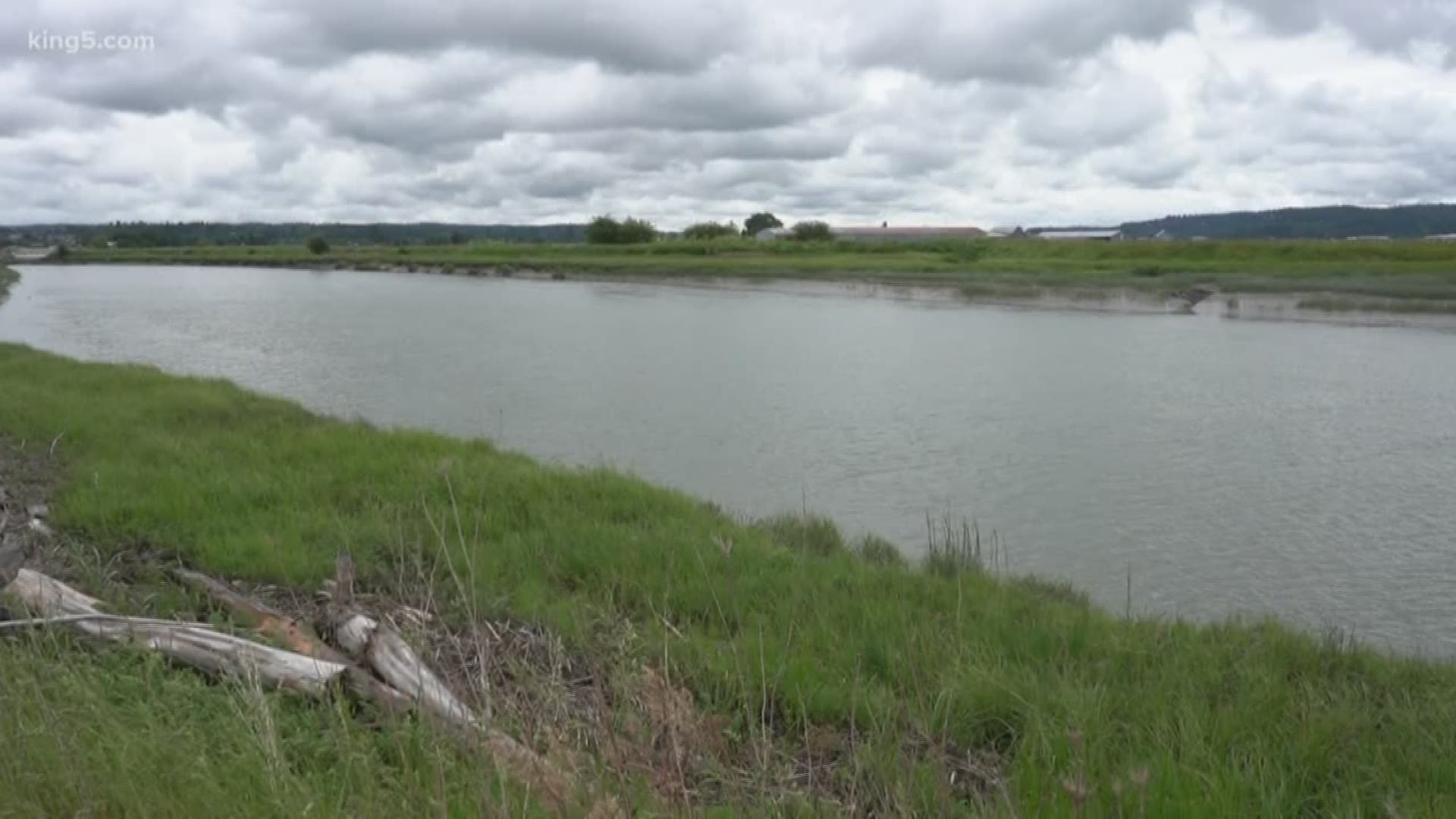STANWOOD, Wash. — The Washington Department of Fish and Wildlife (WDFW) will begin work this summer to restore historic salmon habitat on the Stillaguamish River. Part of the estuary has faced flooding problems for years due to old, failing dikes.
The story of Leque Island is one that's similar to many rivers around Puget Sound. The area once served as important marsh land for the Stillaguamish River, which provided habitat for birds, salmon and other wildlife. In the late 1800s, settlers came to Leque Island and built dikes to control the tides so they could homestead and grow row crops.
The Washington Department of Fish and Wildlife began purchasing land parcels in the 1970s. The state became the full owner of the island in 2010.
When it comes to salmon habitat restoration projects, estuaries are a focus on rivers like the Stillaguamish. Scientists calculate that 70-80% of Puget Sound estuary area has been lost due to diking and drainage and only 15% of the historic estuary in the Stillaguamish River remains.
Dikes around the river are also aging and failing. Failures in 2010 and again in 2016 were costly to repair. Sandbags now line the waterway.
"I was actually out here in December of this last year during a high tide. Water was pouring over. It was a scary place to be," said WDFW habitat biologist Lindsey Desmul. "Because our dikes are failing and it's an expensive process to fix them, and because our Chinook salmon are in such a bad place population-wise, we decided the best thing to do here was to restore this back into estuary."
Two years ago, WDFW excavated about two miles of channels that are not currently connected to the bay. The next project starting this summer will remove the remaining dikes and the sandbags to connect fish habitat.
The plight of the Southern Resident killer whales has drawn more attention to projects like the one at Leque Island, as estuaries are nurseries for salmon, allowing them to grow and hide from predators before heading out to the ocean.
"Still Chinook salmon runs are particularly diminished compared to all of the other Puget Sound stocks. Only a few handfuls of wild Chinook salmon come back every year and spawn in the Stillaguamish River," said WDFW Restoration Project Coordinator Loren Brokaw. "That's part of the reason why this project is so important. It's located very strategically to help out that population of fish."
Other rivers will also benefit Chinook in the Skagit and Snohomish Rivers.
The goal of the Stillaguamish Chinook Recovery Plan is to restore 80% of historic estuary.
Construction is set to begin in July and is scheduled for completion no later than October 31, 2019, at which point it will be reopened to the public. WDFW is constructing a parking area, a 0.7 mile ADA accessible trail, and two boat launches.

